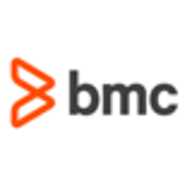![Automic Automation Intelligence [EOL] Logo](https://images.peerspot.com/image/upload/c_scale,dpr_3.0,f_auto,q_100,w_64/PNT6PqoKPXw9AHMYdimfVbN9.jpg)

Control-M and Automic Automation Intelligence [EOL] compete in the workload automation space. Control-M tends to have the upper hand with efficient pricing strategies and support services, while Automic Automation Intelligence [EOL] excels in feature richness, particularly in predictive analytics and reporting.
Features: Control-M offers advanced scheduling capabilities, robust monitoring tools, and a seamless automation process. Automic Automation Intelligence [EOL] focuses on predictive analytics, comprehensive reporting, and detailed insights into automation performance.
Ease of Deployment and Customer Service: Control-M provides straightforward cloud-based deployment with comprehensive support for quicker adoption. Automic Automation Intelligence [EOL] requires a more complex setup, but compensates with strong analytics tools.
Pricing and ROI: Control-M is appealing for lower initial investments, offering quick ROI with its cost-effective setup. Automic Automation Intelligence [EOL] has higher upfront costs but aims for substantial long-term ROI with its feature-rich platform.

Automic Automation Intelligence [EOL] is designed for batch job scheduling and workload automation, improving efficiency in complex IT environments by monitoring, predicting, and optimizing job completion times.
Automic Automation Intelligence [EOL] assists organizations in managing batch job scheduling and workload automation, providing detailed insights into job dependencies and performance. Its ability to integrate with multiple systems enhances collaboration, reduces manual intervention, and offers greater control over IT processes. With robust monitoring capabilities and comprehensive reporting, it helps in making informed decisions, although it requires better scalability and improved performance handling large datasets. Improved integration with third-party tools and more comprehensive documentation would further enhance its usability.
What are the key features of Automic Automation Intelligence [EOL]?Automic Automation Intelligence [EOL] is implemented across industries such as finance, healthcare, and manufacturing to automate and optimize complex IT workflows, ensuring efficient management and operation of critical systems.
Control-M is used for enterprise workload automation, orchestrating finance, retail, healthcare, and supply chain processes. It handles batch job scheduling, managed file transfers, cloud integrations, and compliance auditing across on-premises, cloud, and hybrid environments.
Organizations leverage Control-M to efficiently monitor and manage business-critical processes like payroll, HR, SAP, Informatica, and database tasks. It enhances visibility, security, and error resolution. Automating and optimizing workflows in data centers, AWS, Azure, and Google Cloud Platform, Control-M supports diverse technological environments. The platform's robust capabilities make it suitable for effective centralized management of applications and data pipelines, ensuring enhanced collaboration and scalability.
What are Control-M's most important features?Control-M is implemented in industries like finance to handle payroll and HR tasks, in retail for inventory management and supply chain processes, and in healthcare for compliance auditing and patient data processing. Organizations benefit from streamlined workflows and automated processes across on-premises, cloud, and hybrid environments, ensuring efficient and secure operations.
We monitor all Workload Automation reviews to prevent fraudulent reviews and keep review quality high. We do not post reviews by company employees or direct competitors. We validate each review for authenticity via cross-reference with LinkedIn, and personal follow-up with the reviewer when necessary.